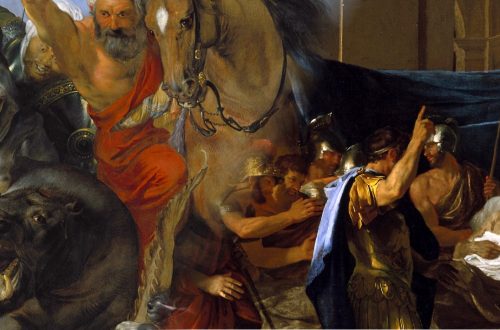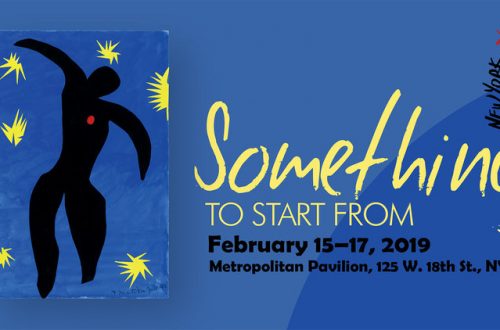Editorial Quick Take
Over the past few months, Veritas Journal has featured several quick takes on the long-running debate between line and color in the history of western art. (Catch up on parts one, two and three if you like.)
But imagine for a moment if we could transpose this debate into another key.
What might modern philosophers have to say on the question?
Immanuel Kant would likely back the Neoclassicist school that puts drawing first. But the next big German philosopher, Friedrich Hegel, might want (like Titian, Rubens, or Delacroix) to liberate color from drawing and its subordinate as mere ornament.
For Kant, form is first and foremost and drawing establishes form upon the blank canvas, just as sculpting does to stone. Drawing constructs a meaningful canvas just as categories of the mind (like ‘space,’ ‘time,’ and ‘causation’) construct a meaningful perception of the physical world. These categories are not necessarily out there to observe. Rather, the human mind frames what it experiences by them. We are hardwired according to Kant to see things in space, to order events in time, and to relate certain successive events as cause and effect. In short, we could do without color, without the ornament that enlivens the image. We could imagine this world in black and white, but we could not imagine it without shape.
Hegel, by contrast, starts with ‘spirit.’ History is the process of spirit manifesting itself in material, concrete forms. This is true of culture of all kinds: art, politics, religion, and philosophy. As spirit inhabits cultural artifacts, it comes to self-realization. This is a lot like the Romantic conception of painting. The painter does not draw mechanically the form in advance. Rather, the painter starts with color and light and then the composition works itself into a form in an organic manner. This clearly applies to abstract painting. But, if the world as such is organic, it would also apply to representational painting. If form is natural and organic, not artificial and mechanical, then the painter can just paint without first drawing a design. The painter doesn’t ‘re-present’ an object, so much as he or she recapitulates its creation.
Here is each philosopher in his own words:
First of all, Immanuel Kant:
In painting, sculpture, and in fact in all the formative arts, in architecture and horticulture, in so far as they are fine arts, the design is what is essential. Here it is not what gratifies in sensation but merely what pleases by its form, that is the fundamental prerequisite for taste. The colours which give brilliancy to the sketch are part of the charm. They may no doubt, in their own way, enliven the object for sensation, but they cannot make it look beautiful. Indeed, more often than not the requirements of the beautiful form restrict them to a very narrow compass, and, even where charm is admitted, it is only this form that serves to ennoble them.
Immanuel Kant, Critique of Aesthetic Judgment
And G.F.W. Hegel:
We may not comprise in a single word this relation between content and form as it appears in the Romantic–for here it is that this relation attains to its complete characterization. It is this: just because the ever-increasing universality and restless working depth of the soul constitute the fundamental principle of the Romantic, the keynote thereof is musical, and, in connection with the particularized content of the imagination, lyrical. For Romantic Art the lyrical is, as it were, the elementary characteristic–a tone which the epic and the drama also strike, and which breathes about the works of the arts of visible representation themselves like a universal, fragrant odor of the soul; for here spirit and soul will speak to spirit and soul through all their images.
G.F.W. Hegel, Lectures on Aesthetics
Drawing or Color Part I: The Poussinistes vs. The Rubénistes
Drawing or Color Part II: The Florentines vs. the Venetians
Drawing or Color Part III: The Neoclassicists vs. the Romantics






One Comment
Tom King
Kant can’t, but Hegel gels the issue! Let there be color!
B&W begain because the first ink was B and contrasted well with W.
A risk-taker chanced along and, brush in hand, changed the view to reflect more than words alone can say: Replication beyond our guttaral description added the new dimension….not quite the 3rd…somewhere, in between, depending on the artist.
That said, give me color. It lights the vision-versions presented to us. The Civil War battlefield being a case in point. For example, the many B&W photographs captured by Matthew Brady were then unable to show the red of lost blood.
The same was true of WW1 and mostly true of WW2. The color red in Vietnam and, now, the Middle East, is presented daily to us by the media….not so much to send a message as to make more advertising money.
Yes, there’s always hope. Show the real truth with the real color of war.